The Alsace Wine Route connects dozens of villages that have preserved their medieval structures. Half-timbered houses from the 16th and 17th centuries line cobblestone streets, while town walls and watchtowers testify to the region's strategic importance. Many villages feature Romanesque churches with sculptural decoration and historic town halls. Riquewihr, Ribeauvillé, and Eguisheim display typical examples of this architecture. Painted wooden beams on houses, old market squares, and vineyards on surrounding slopes characterize these settlements. Castle ruins such as Haut-Koenigsbourg occupy hilltops overlooking the Rhine plain. The region also maintains religious buildings like Murbach Abbey or the church of Thann with its Gothic portal. Local museums present medieval manuscripts and liturgical objects. This cultural landscape combines winemaking tradition with architectural heritage spanning several centuries.
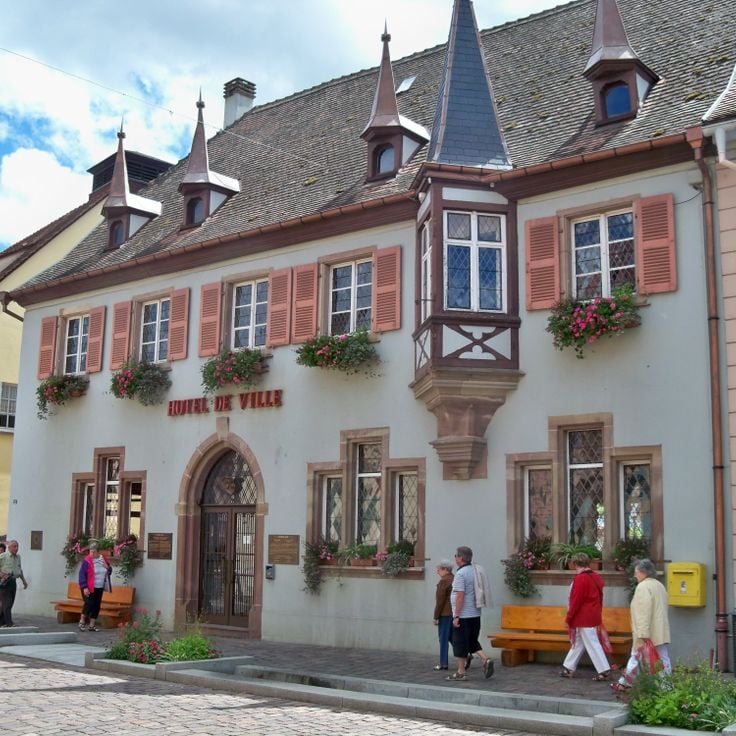
Haut-Rhin, France
Eguisheim is a medieval village built in concentric circles around its central castle. The layout follows a circular plan, with streets and houses encircling the historic center. On the Schlossberg hill above the village stand the ruins of three castles known as the Three Exen Towers. The village sits at the foot of the Vosges Mountains along the Alsatian wine route and is surrounded by vineyards. Half-timbered houses from the 16th and 17th centuries characterize the village with their colorful facades and decorated balconies.
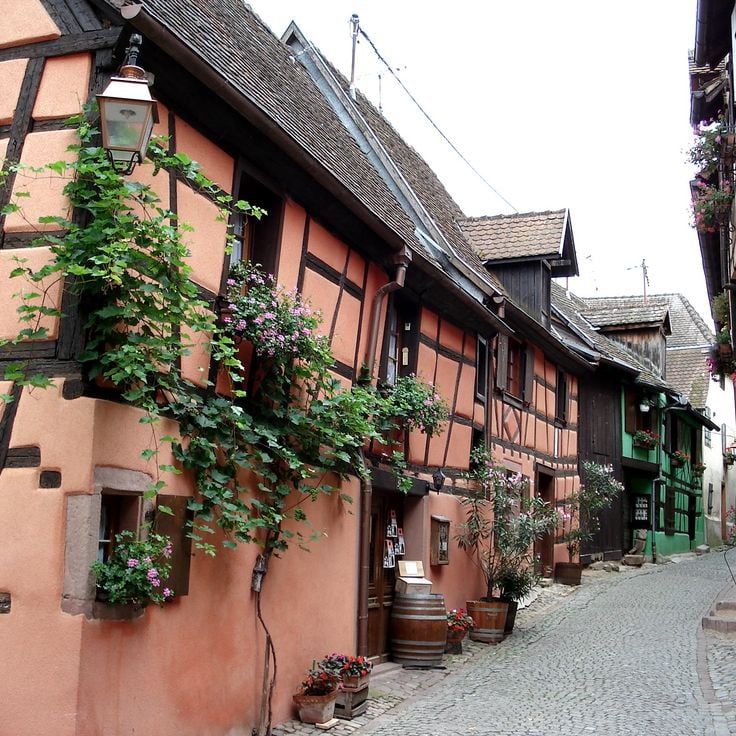
Haut-Rhin, France
Riquewihr is a fortified village from the 16th century surrounded by vineyards. The half-timbered houses in the village contain glasswork workshops and wine cellars where visitors can taste local wines. The preserved town walls and defensive towers demonstrate the strategic importance of the village in the past. The main street runs through the historical center with its traditional houses and courtyards.
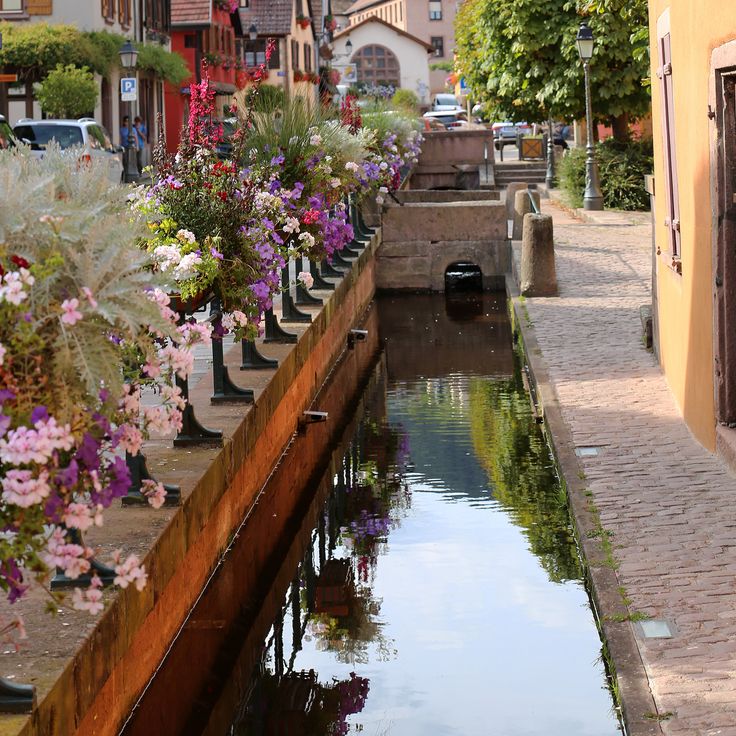
Haut-Rhin, France
Ribeauvillé is a fortified village at the foot of the Vosges Mountains with three medieval castle ruins on the surrounding heights. The 13th-century Butchers' Tower and the town hall with its Gothic facade mark the historic center. The Grand'Rue runs through the center with half-timbered houses from the 15th to 17th centuries. The village is located on the Alsace Wine Route and is surrounded by vineyards.
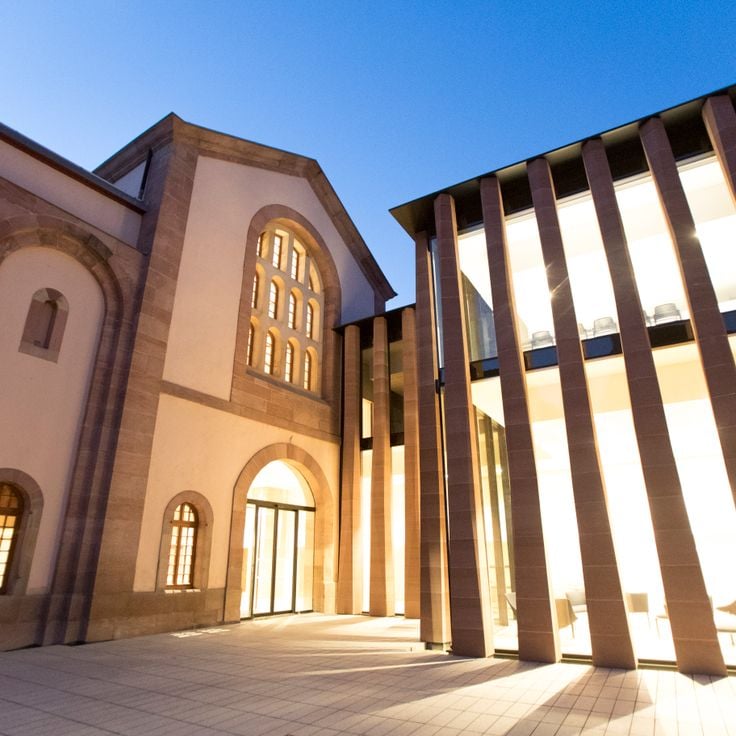
Sélestat, France
The Bibliothèque Humaniste preserves a significant collection of manuscripts and printed books from the 11th to the 16th century. This library documents the intellectual development during the Renaissance in Sélestat, a town that was an important center of humanism at that time. The collection includes Latin schoolbooks, theological works, and scientific texts that were used by scholars at the Latin School of Sélestat.
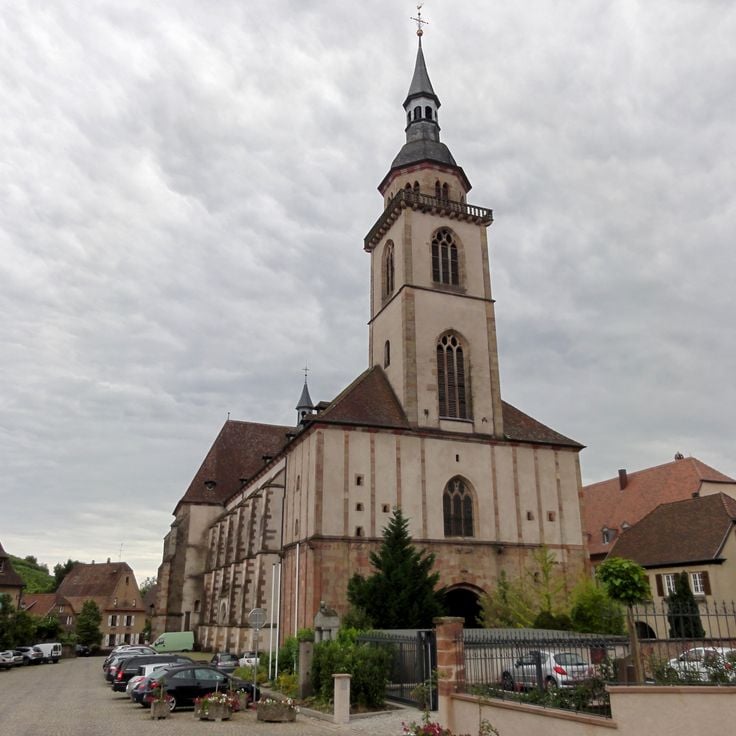
Andlau, France
The Abbatiale Sainte Richarde was built in the 11th century using pink sandstone and features a Romanesque portal, a vaulted crypt, and numerous carved capitals depicting biblical scenes. This former abbey church demonstrates the religious importance of Andlau during the medieval period and showcases characteristic elements of Romanesque architecture in Alsace.
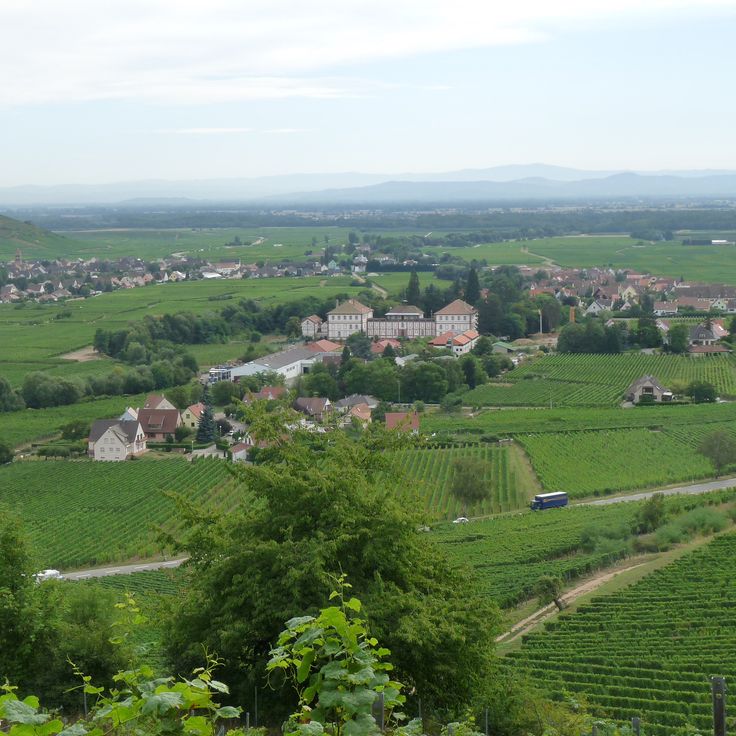
Haut-Rhin, France
Kaysersberg is a wine village in Alsace known for its preserved medieval architecture. The village sits along the Alsatian Wine Route and houses a wood museum documenting traditional regional crafts. The old town features half-timbered houses from the medieval period, a fortified bridge over the Weiss River, and ruins of a 13th-century castle. The birthplace of Albert Schweitzer contains several wineries producing regional wines including Riesling and Gewürztraminer.

Haut-Rhin, France
Hunawihr is a village of about 500 inhabitants in Alsace, known for its fortified church and winemaking tradition. The half-timbered houses display typical colorful facades of the region. The village sits among vineyards along the Alsace Wine Route. A 5-hectare park houses a center for reintroducing white storks and an otter enclosure. The 14th-century Church of Saint-Jacques-le-Majeur is surrounded by defensive walls and once served as a refuge for residents during times of conflict.
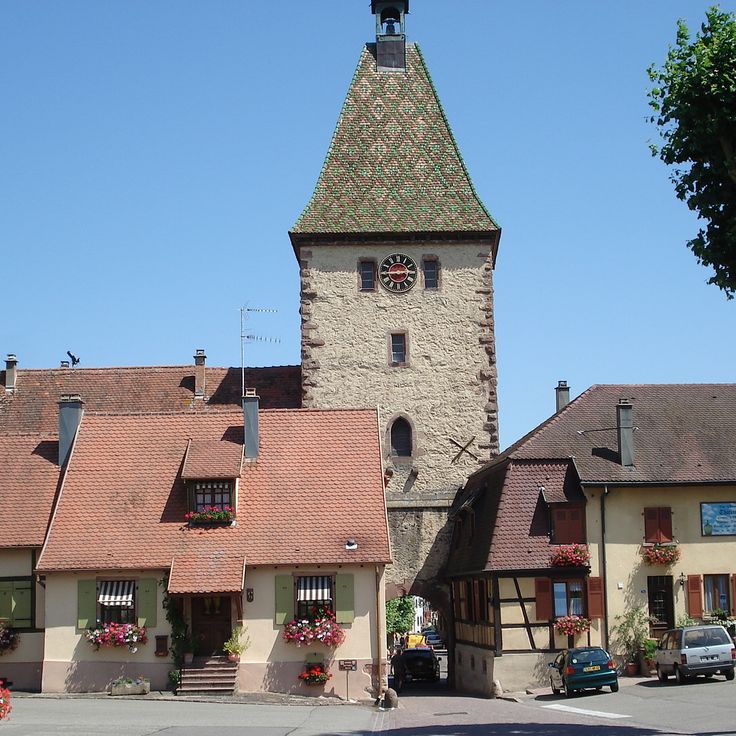
Haut-Rhin, France
Bergheim is a medieval village in Alsace that has preserved its 14th-century ramparts. The main street runs through the historic center with half-timbered houses from different centuries. The village is located at the foot of the Vosges Mountains, a few kilometers from the Château du Haut-Koenigsbourg. The fortifications include several towers and the Upper Gate, which marks the entrance to the old town.
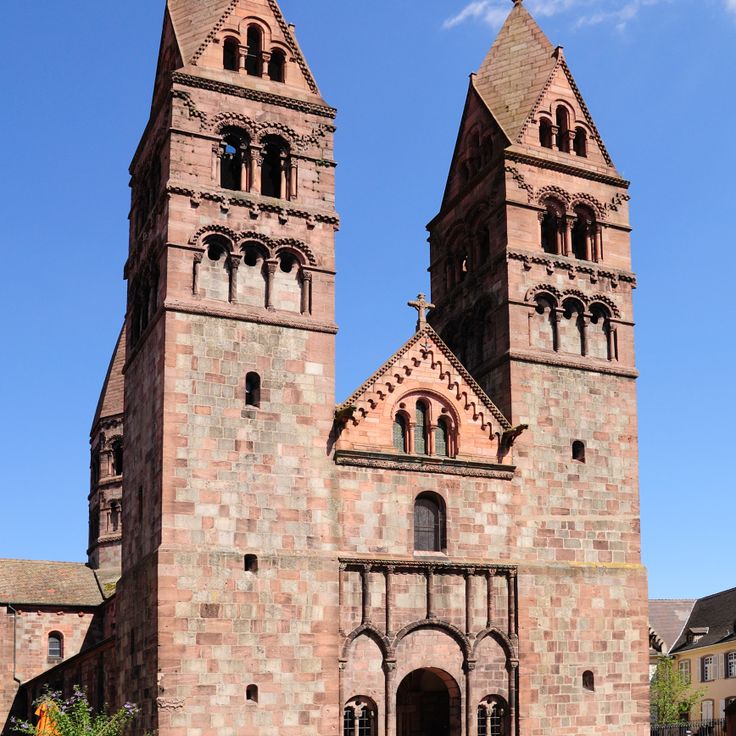
Sélestat, France
The Église Sainte-Foy is a Romanesque church from the 12th century located in the historic center of Sélestat. The building displays typical features of Alsatian Romanesque architecture with its three-nave layout, massive rounded arches, and characteristic twin towers on the western facade. The interior preserves medieval frescoes and stonework that provide insight into the religious art of the Middle Ages.
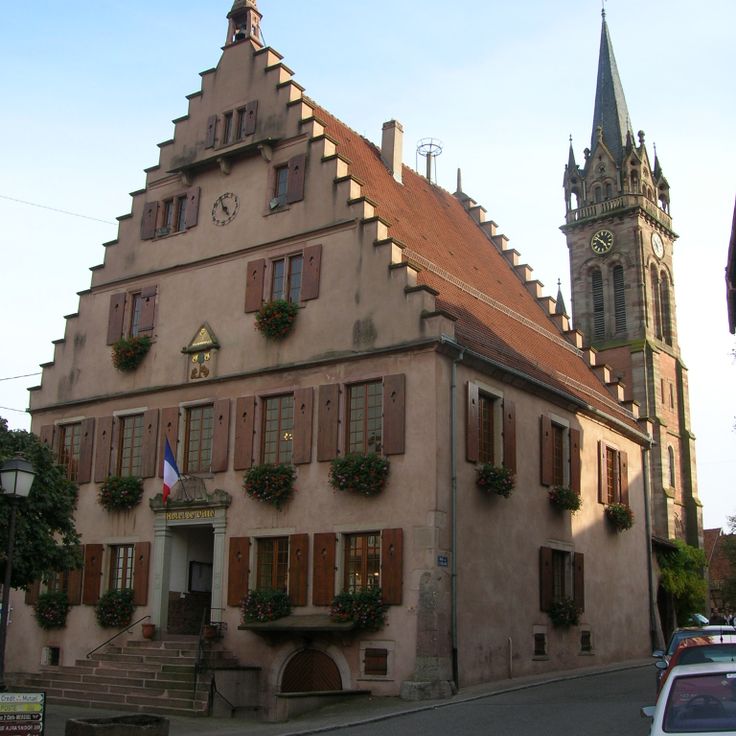
Bas-Rhin, France
Dambach-la-Ville is a medieval town in the Alsatian wine region, surrounded by 470 hectares of vineyards. The 14th-century fortifications include three preserved town gates: the Dieffenthal Gate to the north, the Ebersheim Gate to the south, and the Upper Gate to the west. Above the town stands the 16th-century Chapel of Saint-Sébastien, offering views over the vineyards. The historic center preserves numerous half-timbered houses from the 16th to 18th centuries, along with a market square featuring a fountain.
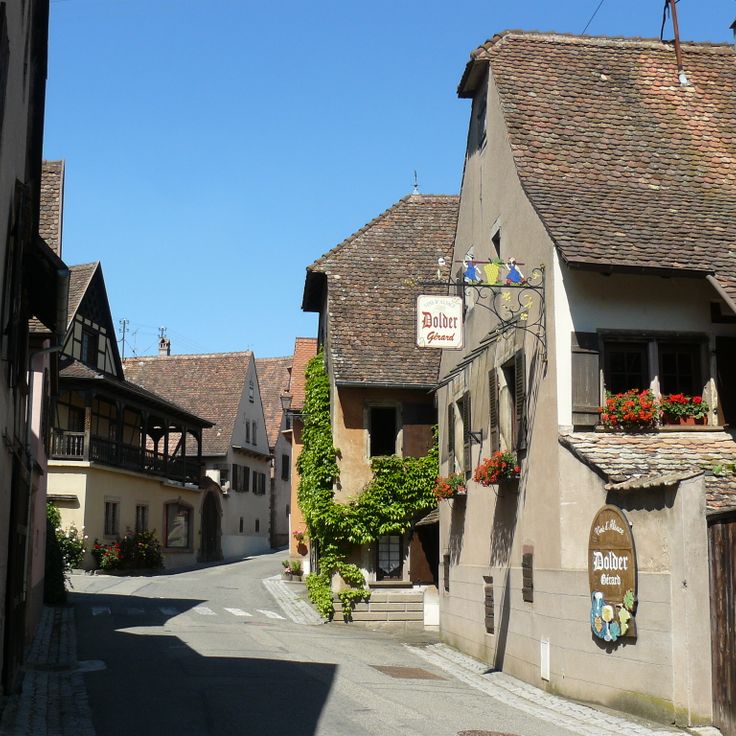
Bas-Rhin, France
Mittelbergheim is a wine-growing village located at the foot of Mont Sainte-Odile near the Zotzenberg hill on the Alsace Wine Route. This village is listed among the most beautiful villages in France and maintains its traditional character with cobbled streets and half-timbered houses dating from the 16th to 18th centuries. Local vineyards produce mainly Riesling and Sylvaner wines on the limestone soils of the region. The historic center displays numerous winegrowers' estates with characteristic courtyards and Renaissance doorways.
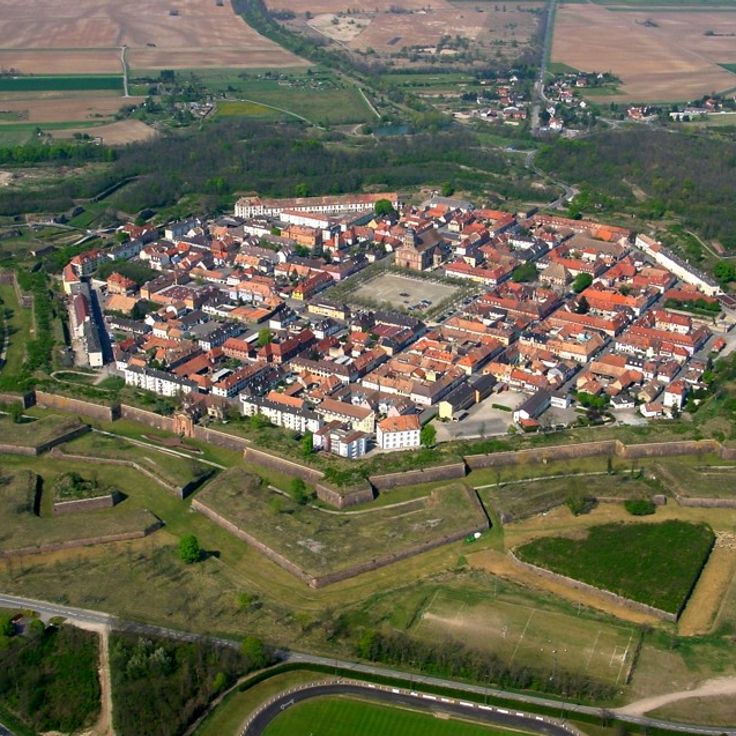
Haut-Rhin, France
Neuf-Brisach is a fortified town built in the 17th century by military engineer Vauban. The fortress displays a perfectly symmetrical octagonal layout with bastions and a regular street grid. The ramparts, gates and casemates remain well preserved, providing insight into military architecture from the era of Louis XIV. The entire complex was inscribed on the UNESCO World Heritage List in 2018.
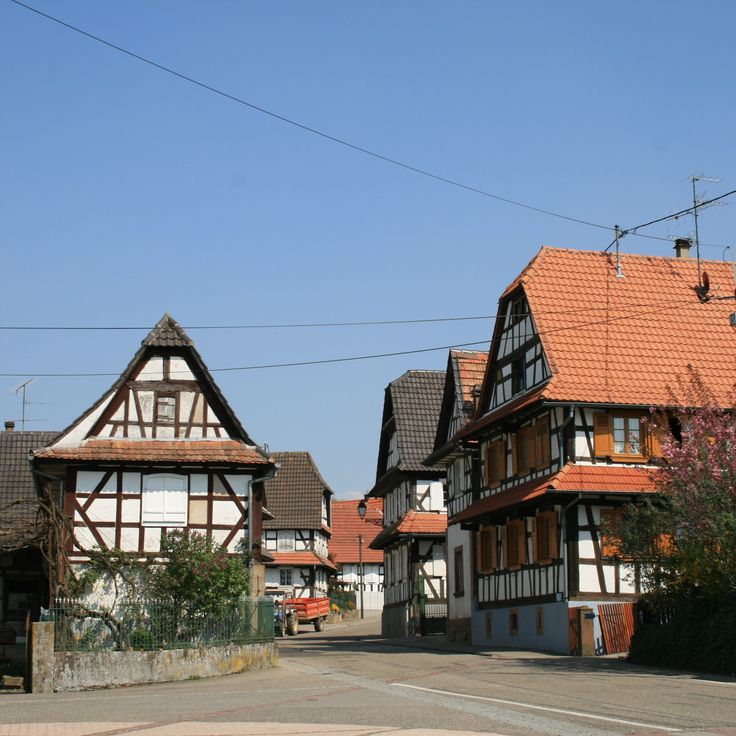
Bas-Rhin, France
Hunspach is located in the Northern Vosges Regional Nature Park and ranks among the characteristic villages of northern Alsace. The village features traditional half-timbered houses with white facades and black wooden beams. Nearby stands Fort Schoenenbourg, one of the largest fortifications of the Maginot Line, built between 1931 and 1935 and now open to visitors.
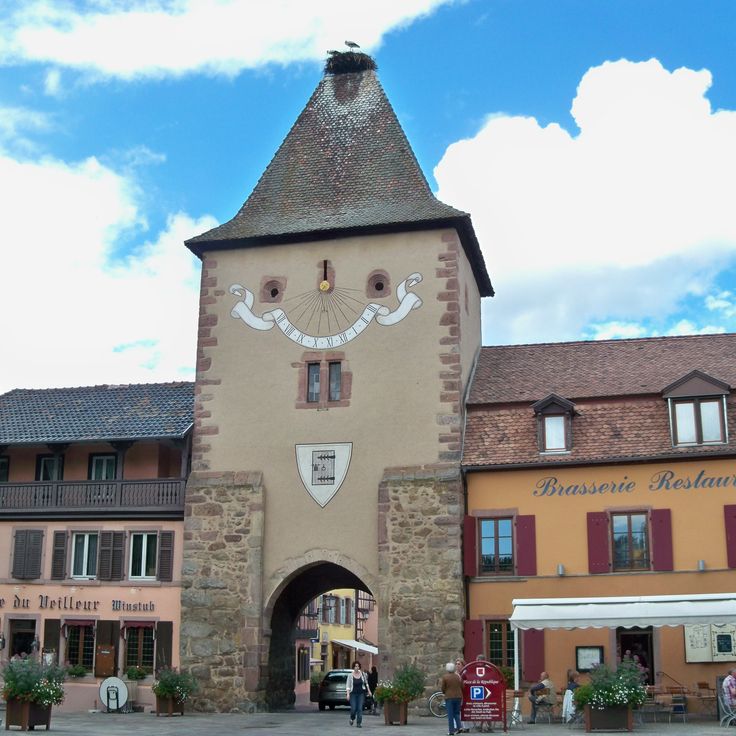
Haut-Rhin, France
Turckheim is a village along the Alsace Wine Route, known for its half-timbered houses dating from the 16th and 17th centuries. The village retains three fortified gates, including the Munster Gate and the France Gate, remnants of its medieval defenses. Local wine cellars offer tastings of Riesling, Gewürztraminer, and Pinot Gris varieties. Several marked hiking trails lead through the surrounding vineyards toward the Munster Valley. Traditional restaurants serve Alsatian specialties such as tarte flambée and baeckeoffe. Each summer, the night watchman makes his rounds, a tradition dating back to the 16th century.
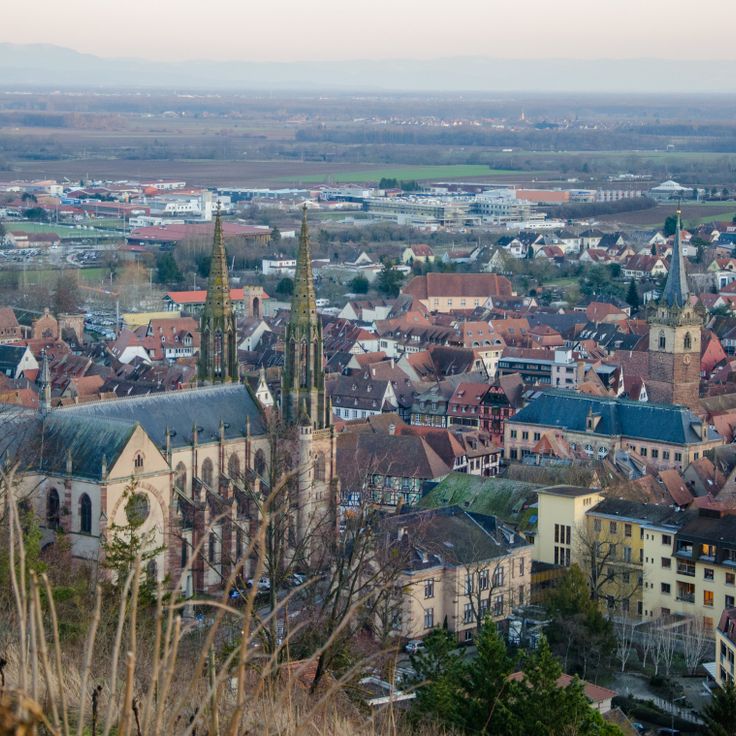
Bas-Rhin, France
Obernai is a commune in Alsace featuring a medieval town center with half-timbered houses from the 15th and 16th centuries. The 13th-century belfry tower rises above the market square, where the Renaissance town hall and the 16th-century Corn Hall fountain stand. The Church of Saints Peter and Paul combines Gothic and neo-Gothic architectural elements. Obernai sits along the Alsace Wine Route and produces Riesling and other regional white wines. The surrounding fields supply white cabbage for traditional sauerkraut production, which has been part of local agriculture for centuries.
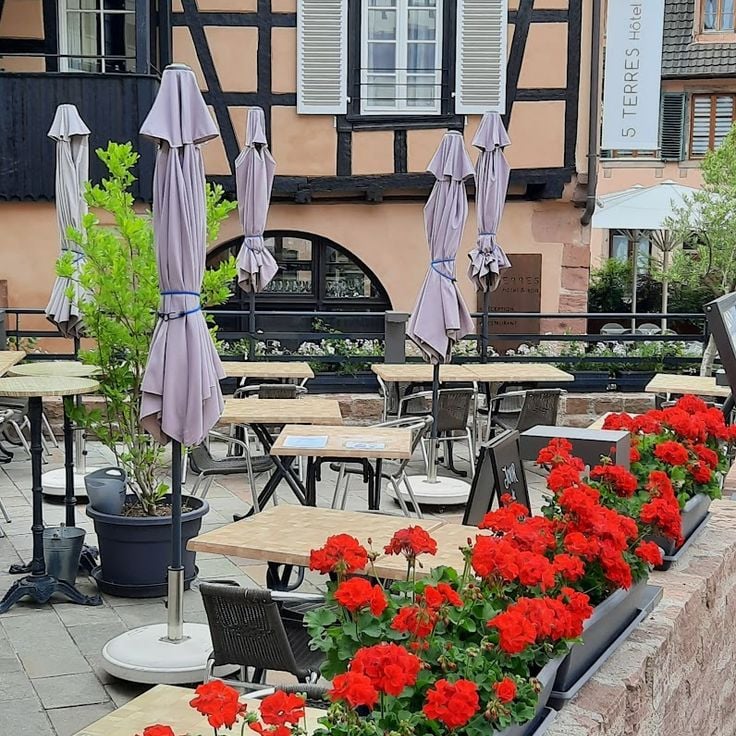
Bas-Rhin, France
Barr stands at the foot of the Vosges Mountains and ranks among the important wine-producing towns along the Alsace Wine Route. The village preserves an architectural heritage from the 17th and 18th centuries with numerous half-timbered houses lining the Grand'Rue. Vineyards surround the town center and produce mainly Gewürztraminer and Riesling. Several wine cellars open their doors to visitors and offer tastings of local wines. The Folie Marco Museum presents furniture and art objects from past centuries. Numerous hiking trails connect Barr with the surrounding vineyards and castle ruins.

Haut-Rhin, France
Guebwiller sits at the foot of the Vosges Mountains and marks the starting point of the Route des Crêtes, a mountain road through the range. The town features the Church of Saint-Léger, a significant example of 14th-century Gothic architecture. Nearby stands Murbach Abbey, a former Benedictine monastery from the 12th century whose Romanesque architecture ranks among the most important religious structures in the region. The valley around Guebwiller is surrounded by vineyards and forms part of the Alsace Wine Route.
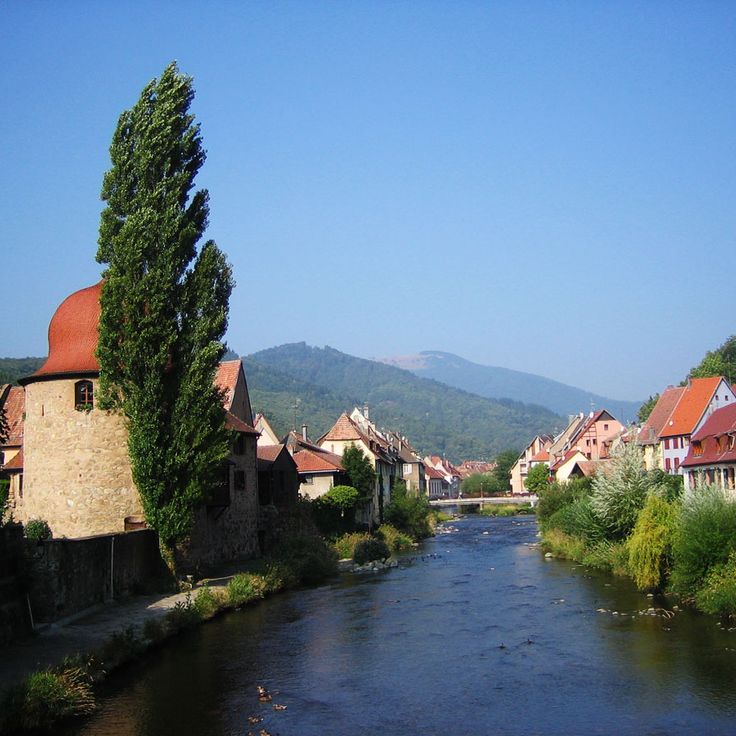
Haut-Rhin, France
Thann sits at the southern end of the Alsace Wine Route and is dominated by the Gothic collegiate church of Saint-Thiébaut from the 14th century. This religious structure features an ornate portal and a 78-meter bell tower. Above the village stand the ruins of Engelbourg Castle, whose single remaining tower is known as the Witch's Eye. The elevated position provides views over the Thur Valley and surrounding vineyards. The historic center preserves half-timbered houses and traditional buildings from various centuries.
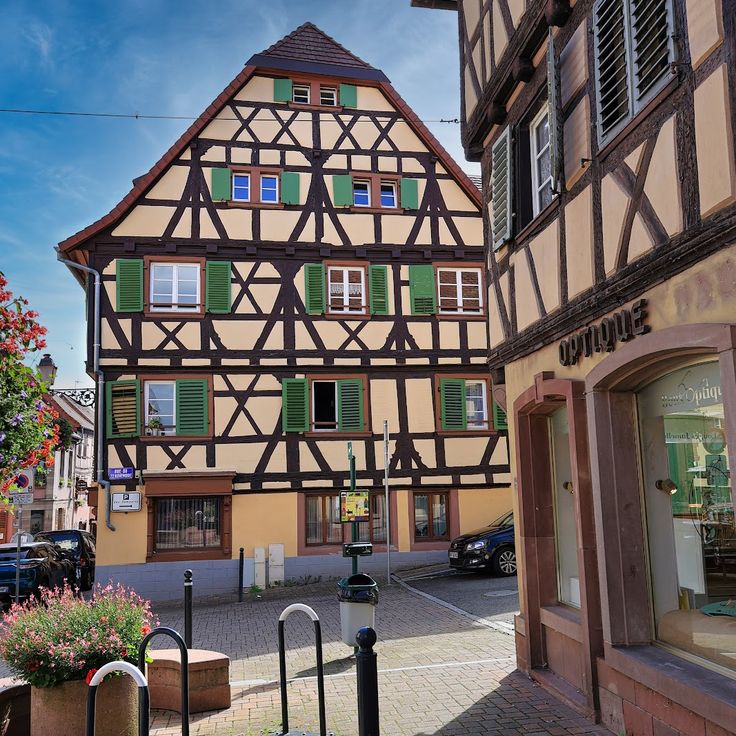
Bouxwiller, France
Bouxwiller is located in Alsace and preserves traces of its Jewish past. The Musée Judéo-Alsacien documents the religious and daily life of Jewish communities in the region from the 18th to the 20th century. The 18th-century Protestant church reflects the denominational diversity of the town. The historic center features half-timbered houses and buildings from different periods, testifying to the economic development as a former residential town of the Counts of Hanau-Lichtenberg.
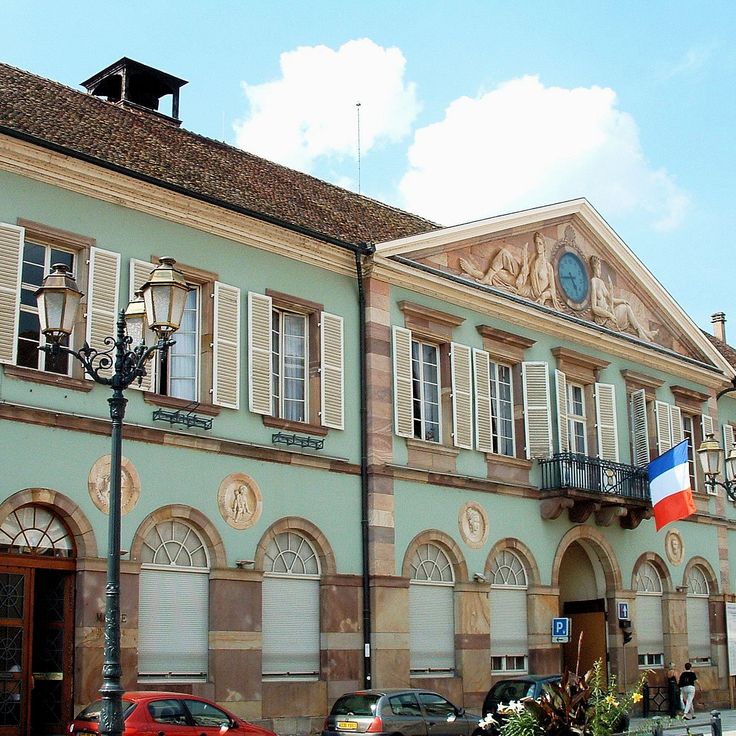
Bas-Rhin, France
Molsheim sits at the foot of the Vosges Mountains and combines religious heritage with automotive history. The Metzig, the former butchers' guild house from the 16th century, displays an ornate Renaissance facade with a stepped gable and now serves as the town hall. The Jesuit Church was built between 1615 and 1617 and stands as the first major Jesuit church on the right bank of the Rhine, featuring notable baroque interior decoration. The Bugatti Museum documents the history of the legendary car manufacturer that Ettore Bugatti founded in this town in 1909, presenting original vehicles and technical documents.
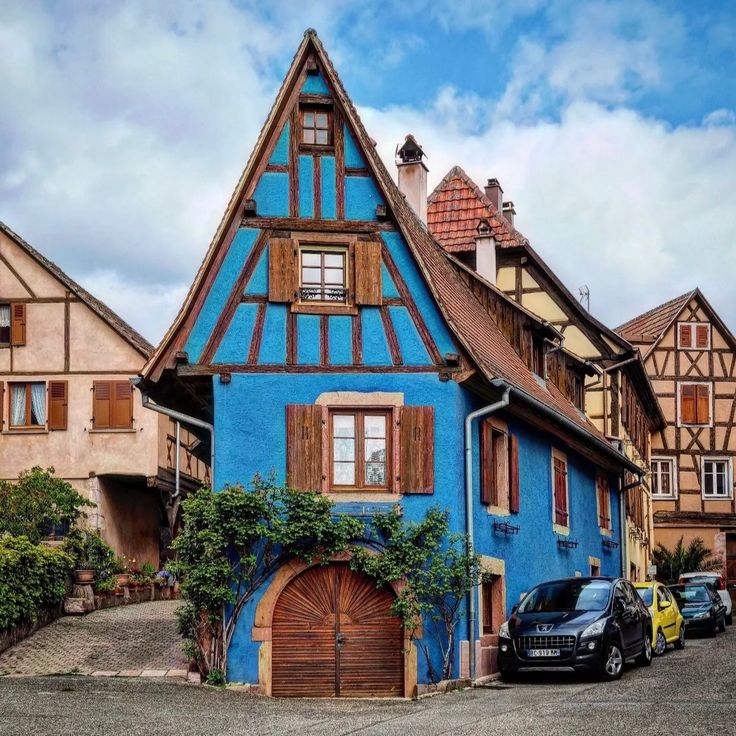
Haut-Rhin, France
Saint-Hippolyte sits at the foot of Haut-Koenigsbourg Castle and serves as a wine-growing village along the Alsace Wine Route. The village preserves its historical character with half-timbered houses from the 16th and 17th centuries lining cobblestone streets. Vineyards surrounding the village primarily produce Pinot Noir. Several wine cellars in the village offer tastings of local wines. The Romanesque church dates back to the 14th century.
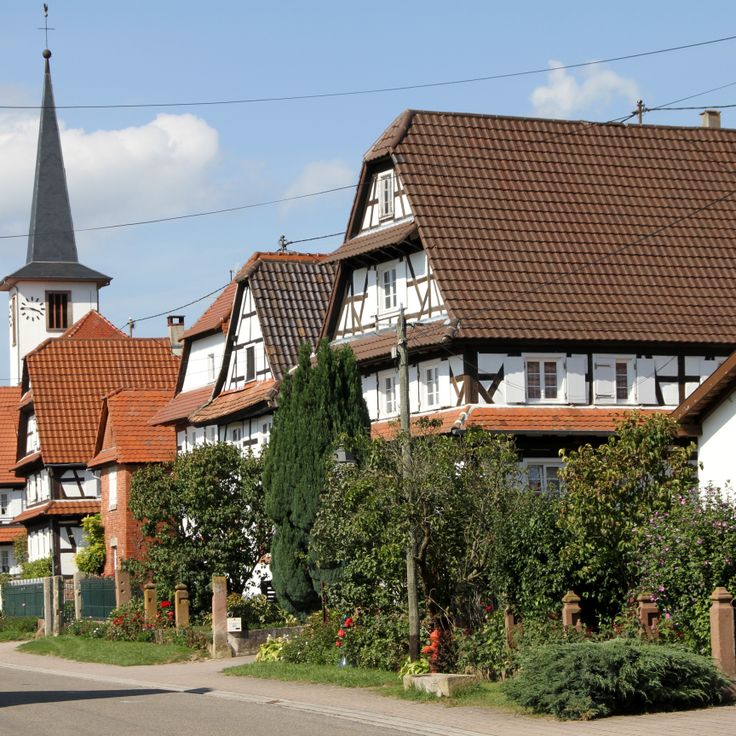
Bas-Rhin, France
Seebach is a village in northern Alsace known for its well-preserved half-timbered houses from the 18th century. The settlement is located in the wine-growing region and maintains its traditional architecture with numerous listed buildings. Every July, the Streisselhochzeit takes place here, a folklore festival that recreates a 19th-century Alsatian wedding. The event attracts visitors who come to experience traditional costumes, music, and regional customs. Seebach is one of the communities along the Alsatian Wine Route.
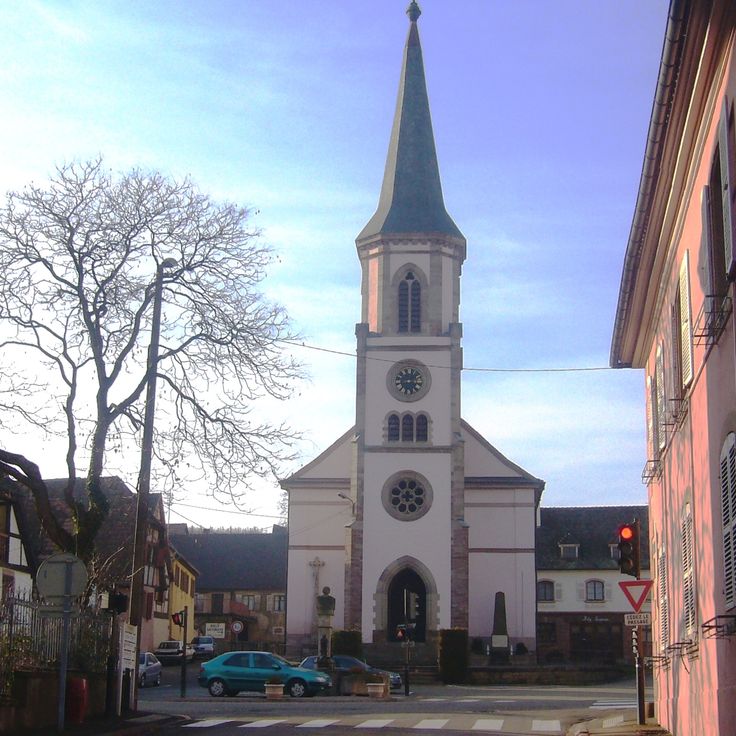
Haut-Rhin, France
Rorschwihr is a wine-producing village at the foot of the Vosges Mountains, known for its Riesling and Gewürztraminer. The village preserves its traditional character with half-timbered houses from the 16th and 17th centuries lining narrow streets. Local wine cellars open their doors for tastings, showcasing the work of winemaking families who have cultivated the steep vineyards surrounding the village for generations.
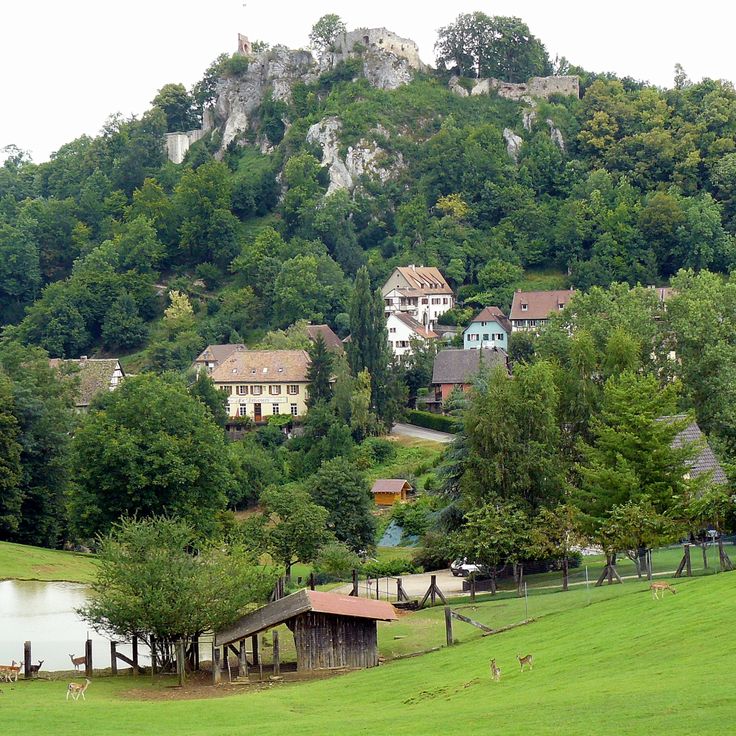
Haut-Rhin, France
Ferrette sits in southern Alsace, dominated by the ruins of a medieval castle perched on a rocky outcrop. The village retains its historical character with narrow streets and traditional houses. From the castle ruins, views extend across the surrounding valleys to the Jura mountains. The fortress dates from the 12th century and played an important role in regional history. Ferrette serves as a starting point for hikes into the Sundgau countryside and the nearby Jura heights.
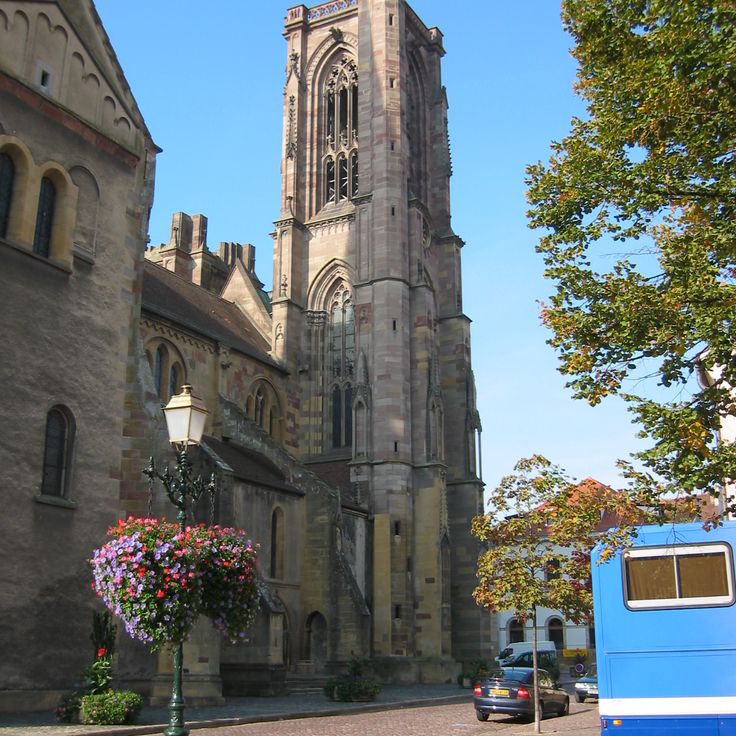
Haut-Rhin, France
Rouffach is a historic wine village in Alsace, known for its Romanesque-Gothic church of Notre-Dame de l'Assomption dating from the 12th century. The village sits surrounded by vineyards at the foot of the Vosges Mountains. Above the town stands the Château d'Isenbourg from the 15th century, now operating as a hotel. The historic center preserves several half-timbered houses and medieval structures, including the Witches' Tower from the 13th century.
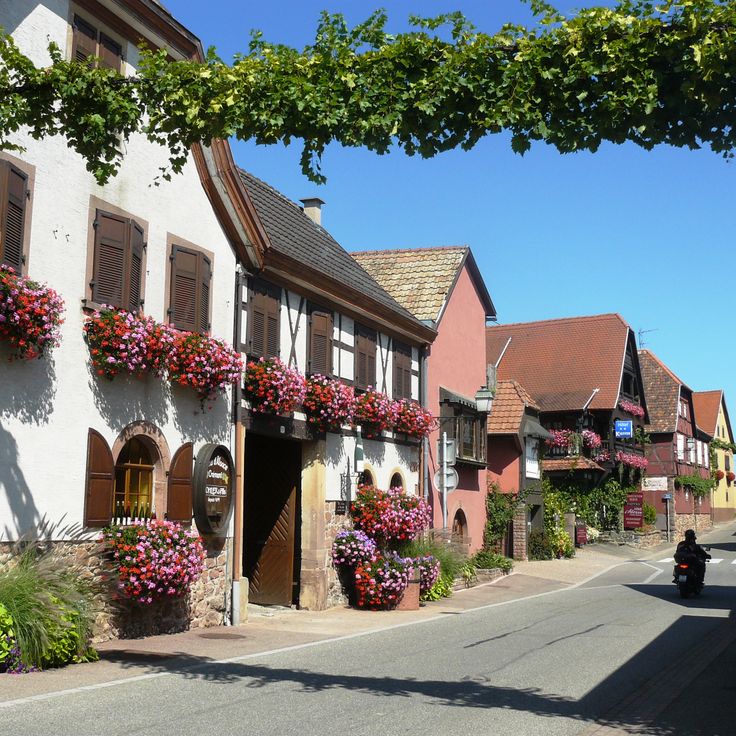
Bas-Rhin, France
Itterswiller is a wine-growing village along the Alsace Wine Route, known for its traditional half-timbered houses. The village sits among vineyards and offers several wine cellars where visitors can taste local grape varieties. The houses are decorated with flower displays, particularly during the summer months. The narrow streets of the village center wind through the historic buildings. Several winemaking families welcome guests to their estates for tastings of Riesling, Gewürztraminer, and other regional wines.
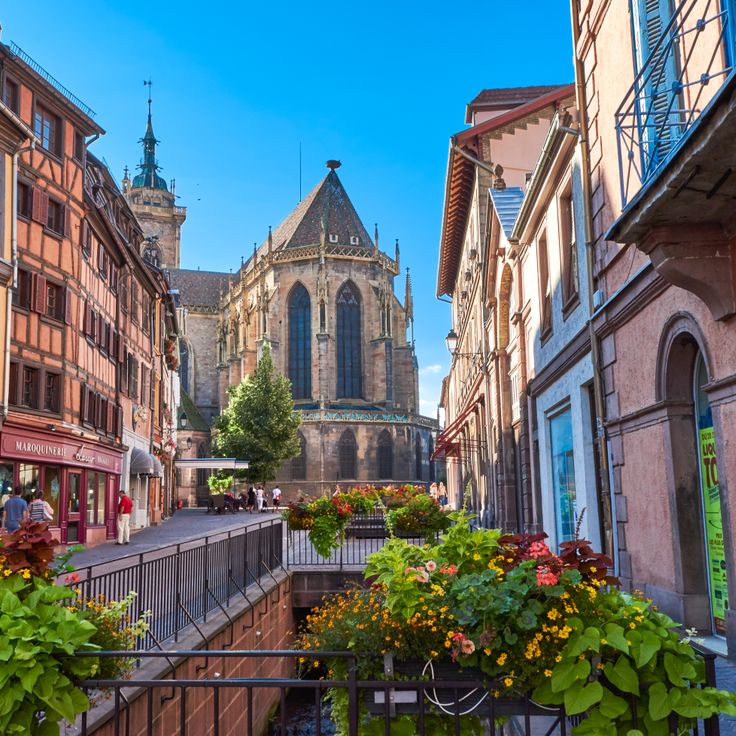
Haut-Rhin, France
Colmar is the largest town along the Alsace Wine Route, combining over a thousand years of history with exceptional architectural diversity. The old town centers around the 13th-century Saint Martin's Collegiate Church, a Gothic structure featuring its characteristic colored glazed tile roof. The Tanners' Quarter preserves its medieval layout with half-timbered houses lining the Lauch River canals. The Little Venice district offers a walking route along waterways bordered by 16th and 17th-century houses. The Unterlinden Museum, housed in a former 13th-century Dominican convent, displays the Isenheim Altarpiece by Matthias Grünewald. The town contains several Renaissance buildings, including the 1537 Pfister House with its painted facades and octagonal turret.
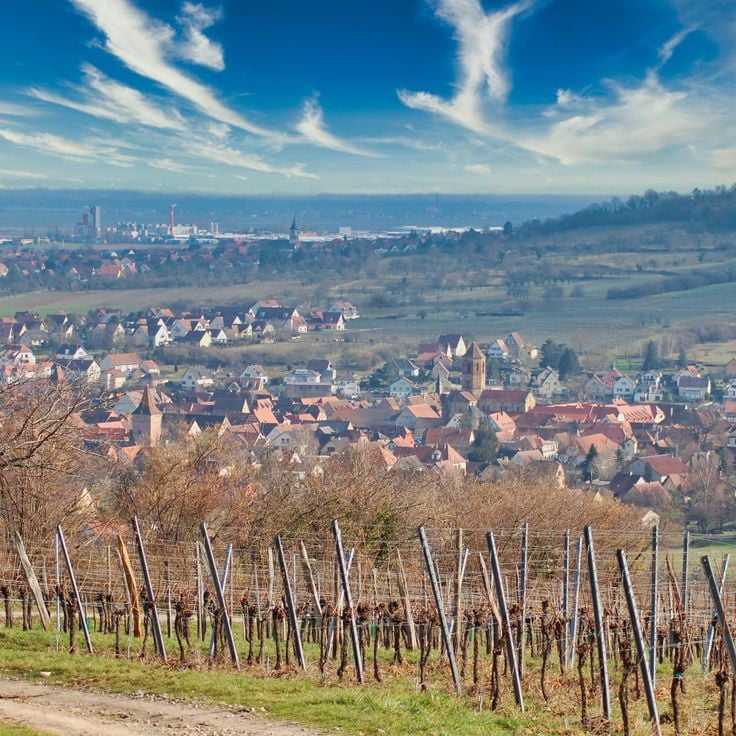
Bas-Rhin, France
Rosheim is a village on the Alsace wine route known for its architectural heritage. The Romanesque church of Saints-Pierre-et-Paul, dating from the 12th century, is considered one of the finest examples of Romanesque architecture in Alsace. The church displays characteristic features of this period with its octagonal bell tower and sculpted portals. The village preserves parts of its medieval fortifications, including gates and wall sections from the 13th and 14th centuries. The historic center contains half-timbered houses from various centuries that demonstrate traditional Alsatian construction methods.
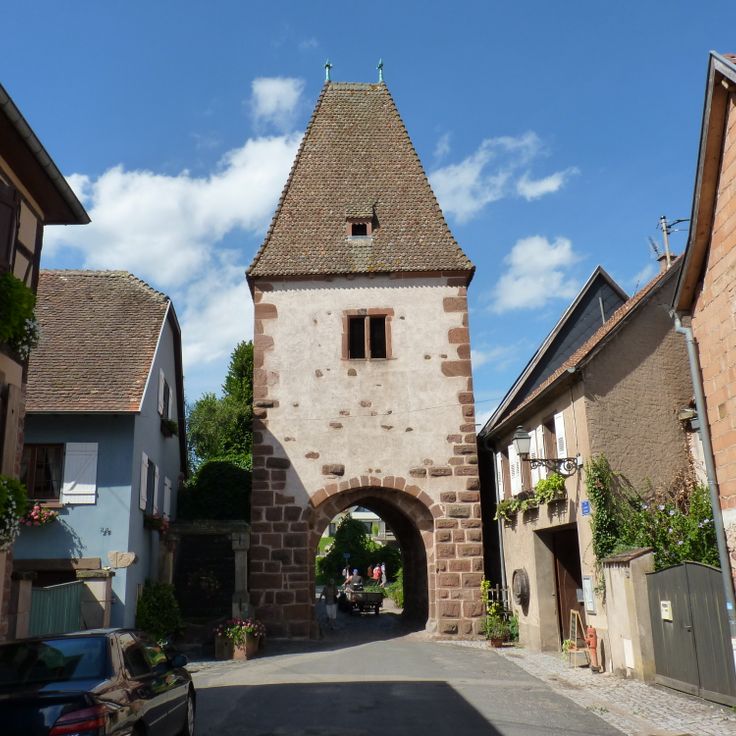
Bas-Rhin, France
Boersch is a medieval village at the foot of the Vosges Mountains that has preserved its historic architecture. Three 14th-century gates - the Porte Basse, Porte Haute, and Porte du Walch - mark the former boundaries of the town. The Place de l'Hôtel de Ville features a hexagonal Renaissance fountain built in 1617, decorated with coats of arms and sculptures. The town hall dates from the 16th century and displays typical Alsatian half-timbered construction elements.

Bas-Rhin, France
Scherwiller is a village located at the foot of the Vosges Mountains, known for its vineyards and traditional Alsatian houses. The village sits along the Alsace Wine Route and preserves several half-timbered houses dating from the 16th and 17th centuries. Above the village stand the ruins of two medieval castles, Ortenbourg and Ramstein, constructed in the 13th century. The Church of Saint-Pierre-et-Saint-Paul, built in the 19th century, features a neo-Gothic bell tower. Scherwiller produces mainly Riesling and Gewürztraminer wines on its hillside vineyards. The village hosts an annual wine festival in September and offers several hiking trails leading to the castle ruins.
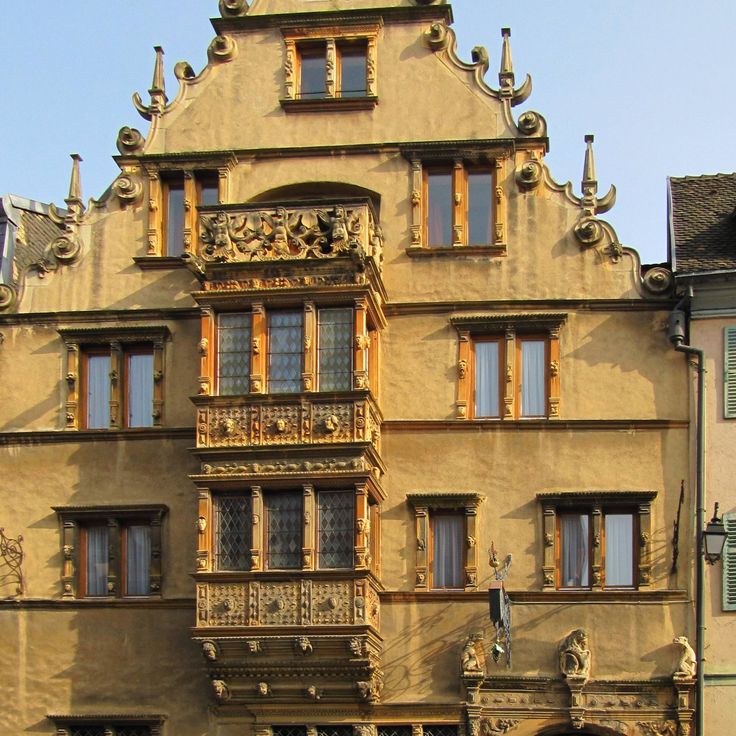
Colmar, France
The Maison des Têtes was built in 1609 for the merchant Anton Burger and stands as one of the most important Renaissance buildings in Colmar. The facade displays over one hundred carved heads and masks representing humans, animals, and fantastical creatures. The building takes its name from this extraordinary decoration. The house was restored in the 19th century and crowned with a statue by Auguste Bartholdi. Today, the Maison des Têtes houses a hotel and restaurant, with the historic interior elements preserved throughout the building.

Colmar, France
The Koïfhus in Colmar is a 15th-century medieval customs house located in the heart of the old town. This building with its characteristic glazed tile roof and Gothic architecture was formerly used to control and tax trade goods. Today, the Koïfhus houses the regional wine association and hosts wine tastings during the summer months, allowing visitors to discover the wines of Alsace.